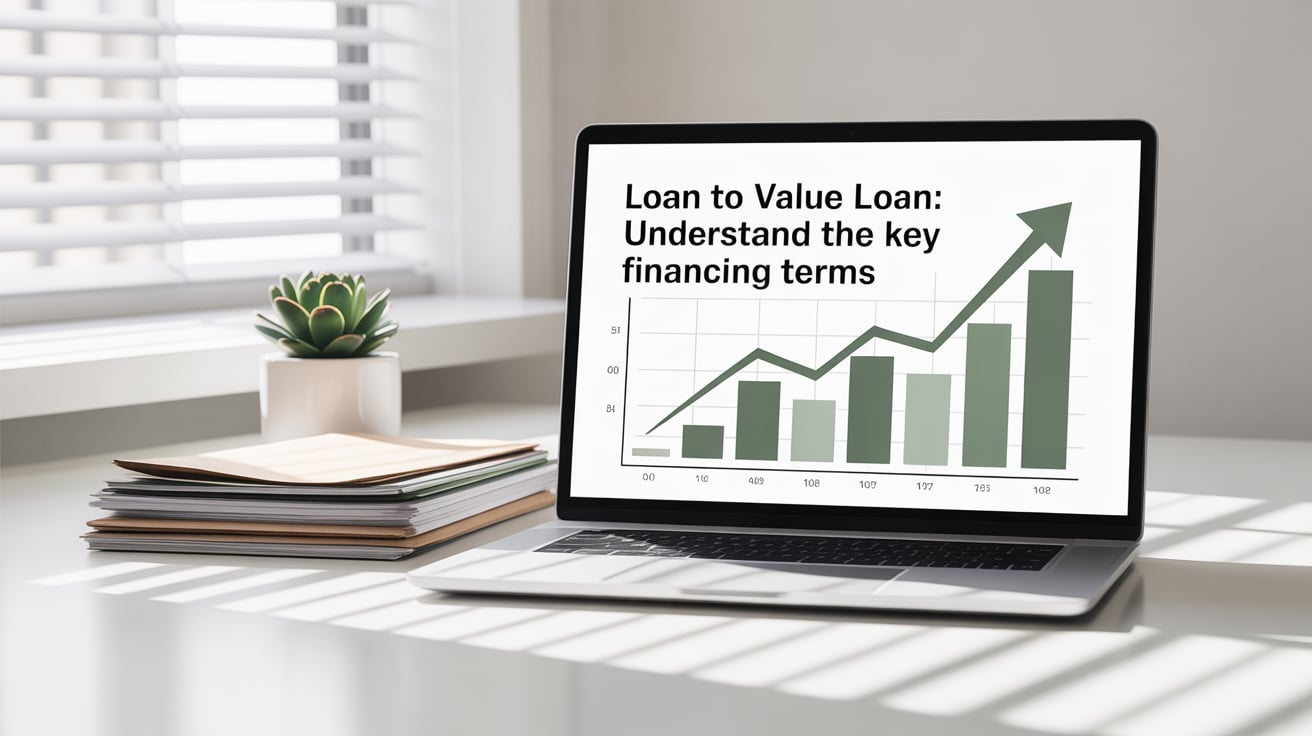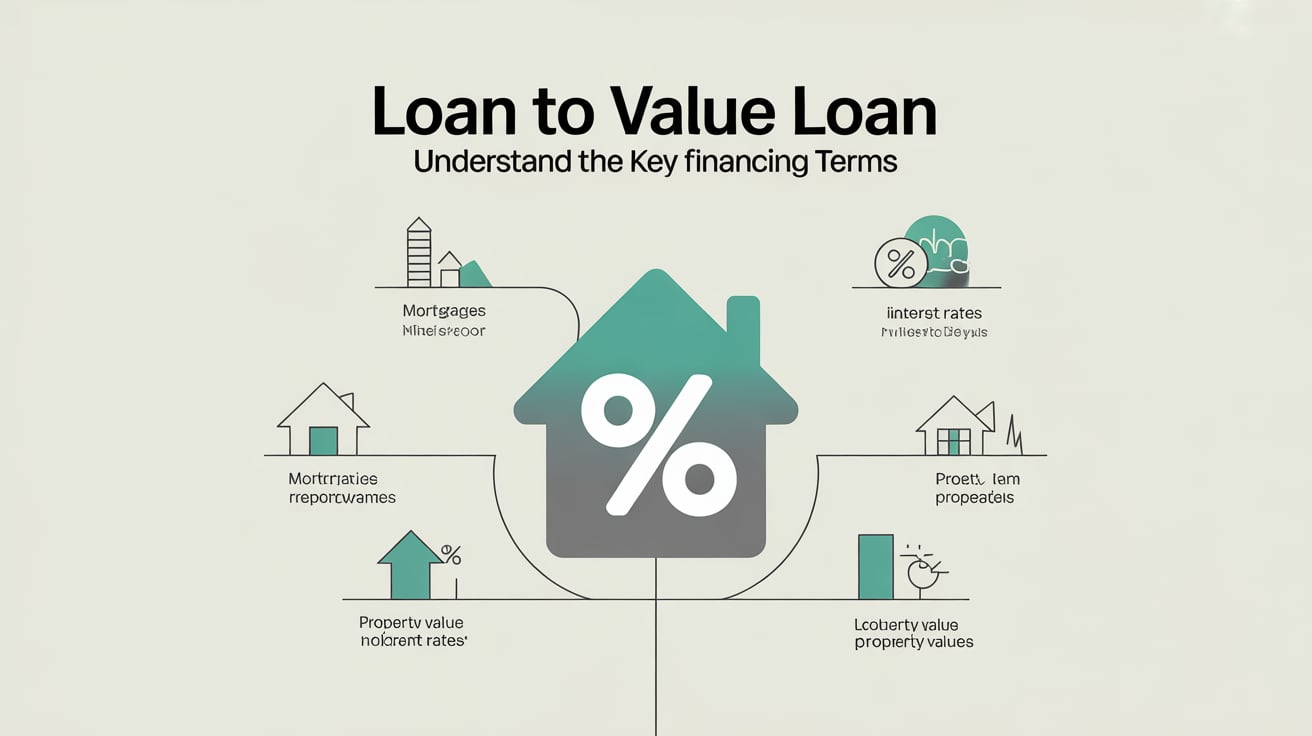Loan to Value Loan: Understand the Key Financing Terms
Published: 21 Sep 2025
What is Loan to Value (LTV) Ratio?
Loan to Value Loan ratio is a critical metric in the world of finance, particularly in the realm of lending. It measures the relationship between the loan amount and the value of the asset purchased. In simple terms, the LTV ratio tells a lender how much of the asset’s value is financed by the borrower and how much equity the borrower has in the property.
For instance, if a property is worth $100,000, and the borrower has taken a loan of $80,000, the LTV ratio would be 80%. This means that the borrower is financing 80% of the property’s value and contributing 20% in equity.
Why LTV is Important?
LTV is one of the key factors that lenders use to assess risk. A high LTV indicates that the borrower has a low equity stake in the asset, making the loan riskier for the lender. On the other hand, a low LTV shows that the borrower has more equity and thus poses less risk.

The Importance of LTV in Loan Approval
Lenders use the LTV ratio as an indicator of risk. A higher LTV indicates that the borrower has less equity in the property, which could make the loan more risky for the lender. Lenders may approve loans with high LTV ratios, but they usually charge higher interest rates to compensate for the risk involved.
Why High LTV is Riskier?
A higher LTV ratio is riskier for lenders because the borrower has less equity in the asset. In the event that the borrower defaults on the loan, the lender may not be able to recover the full amount from the sale of the asset, especially if the property value falls.
Impact of LTV on Interest Rates
LTV plays a major role in determining the interest rates offered by lenders. If your LTV ratio is high, you may face higher interest rates. This is because a higher LTV represents a higher level of risk to the lender. On the contrary, a lower LTV signals lower risk, often resulting in more favorable interest rates.
How Interest Rates Vary with LTV
Lenders usually have certain LTV thresholds, and these thresholds can vary depending on the loan type. For example, in mortgage loans, an LTV of 80% or lower often results in the best interest rates. Higher LTVs may lead to the need for private mortgage insurance (PMI) and higher interest rates.
Types of Loans Affected by LTV
Several types of loans use the LTV ratio to assess risk, including:
- Mortgage Loans
- Auto Loans
- Home Equity Loans
- Personal Loans Secured by Property
- Commercial Loans
In each of these loan types, the LTV ratio helps lenders assess the borrower’s financial stability and risk profile.

LTV Ratio and Risk Assessment
The LTV ratio is an essential tool in risk assessment for both borrowers and lenders. For borrowers, it serves as an indicator of how much equity they have in the property, which is crucial for understanding the loan’s financial implications. For lenders, the LTV ratio helps determine the likelihood of the loan being paid back in full.
A high LTV suggests higher risk for the lender, which could result in more stringent loan terms, including higher interest rates and requirements for additional insurance.
What is a High LTV?
A high Loan to Value (LTV) ratio typically refers to a ratio above 80%. In this case, the borrower has less equity in the asset and is financing a larger percentage of the asset’s value.
Challenges of High LTV Loans
High LTV loans are more likely to lead to financial struggles. They might also result in a higher monthly payment due to interest rate increases, and the borrower could be required to pay for private mortgage insurance (PMI), which adds to the overall cost of the loan.
What is a Low LTV?
A low LTV ratio is usually 80% or below. A lower LTV means the borrower has more equity in the property. For example, in the case of a $100,000 loan with a $120,000 property value, the LTV would be 83.33%. In this case, the borrower contributes a higher portion of the property value.
Benefits of Low LTV
A low LTV typically results in more favorable terms for the borrower. Lower interest rates, better loan approval chances, and avoiding the need for PMI are some of the benefits associated with low LTV loans.
How to Lower Your LTV Ratio
There are a few strategies to lower your LTV ratio:
- Increase the Down Payment: Putting down a larger deposit reduces the loan amount and thus lowers the LTV ratio.
- Pay Down the Loan: If you already own the property, paying down part of the loan can help lower the LTV.
- Increase Property Value: Renovating or improving the property can increase its value, which lowers the LTV ratio.

Common LTV Thresholds in Different Loan Types
Each type of loan has different LTV thresholds. Here are some general guidelines:
| Loan Type | Maximum LTV Threshold |
|---|---|
| Conventional Mortgages | 80% |
| FHA Loans | 96.5% |
| VA Loans | 100% |
| Home Equity Loans | 80% |
| Auto Loans | 100% |
These thresholds are subject to the specific lender’s policies.
LTV and Mortgage Insurance
Private mortgage insurance (PMI) is often required when the LTV exceeds 80%. PMI protects the lender in case the borrower defaults on the loan. It can be a significant extra cost for borrowers with high LTV ratios.
How LTV Affects Home Buyers
For home buyers, LTV can significantly impact the mortgage process. Buyers with a higher LTV will have to pay higher monthly payments and may be required to purchase private mortgage insurance (PMI), which adds to the overall cost.
LTV in Auto Loans and Other Consumer Financing
LTV isn’t just for mortgages. It also applies to auto loans and other forms of consumer financing. A high LTV on an auto loan means you’re financing a significant portion of the car’s value, which could result in higher interest rates and a larger total loan cost over time.
Pros and Cons of High and Low LTV Ratios
High LTV Pros:
- Easier to get financing with little down payment
- Useful for first-time homebuyers or those with limited savings
High LTV Cons:
- Higher risk for lenders
- Higher monthly payments and interest rates
- Need for PMI
Low LTV Pros:
- Lower risk for lenders
- Better loan terms and interest rates
- Avoidance of PMI
Low LTV Cons:
- Requires more upfront capital
- May be difficult for those with limited savings
Loan to Value vs. Debt to Income Ratio
While LTV focuses on the relationship between the loan and the asset value, Debt to Income (DTI) ratio focuses on a borrower’s ability to repay debt. Both metrics are used by lenders to assess the borrower’s financial situation.

FAQs
The maximum LTV for a conventional mortgage is typically 80%, while government-backed loans like FHA and VA can go higher.
Yes, but expect higher interest rates and potentially higher costs due to PMI.
Divide the loan amount by the property’s appraised value and multiply by 100.
A higher LTV means you have less equity in the property, which is riskier for lenders.
You may need to pay for PMI and face higher interest rates.
Yes, by paying down your loan, increasing your down payment, or increasing the value of the property.
Conclusion
Understanding the Loan to Value (LTV) ratio is essential for anyone considering a loan, whether it’s for a home, car, or any other significant purchase. It helps assess the risk involved and influences the terms and conditions of the loan. By considering the LTV, borrowers can make more informed decisions and secure financing that aligns with their financial goals. Always aim for a lower LTV to reduce risks and ensure better loan terms.

- Be Respectful
- Stay Relevant
- Stay Positive
- True Feedback
- Encourage Discussion
- Avoid Spamming
- No Fake News
- Don't Copy-Paste
- No Personal Attacks

- Be Respectful
- Stay Relevant
- Stay Positive
- True Feedback
- Encourage Discussion
- Avoid Spamming
- No Fake News
- Don't Copy-Paste
- No Personal Attacks





